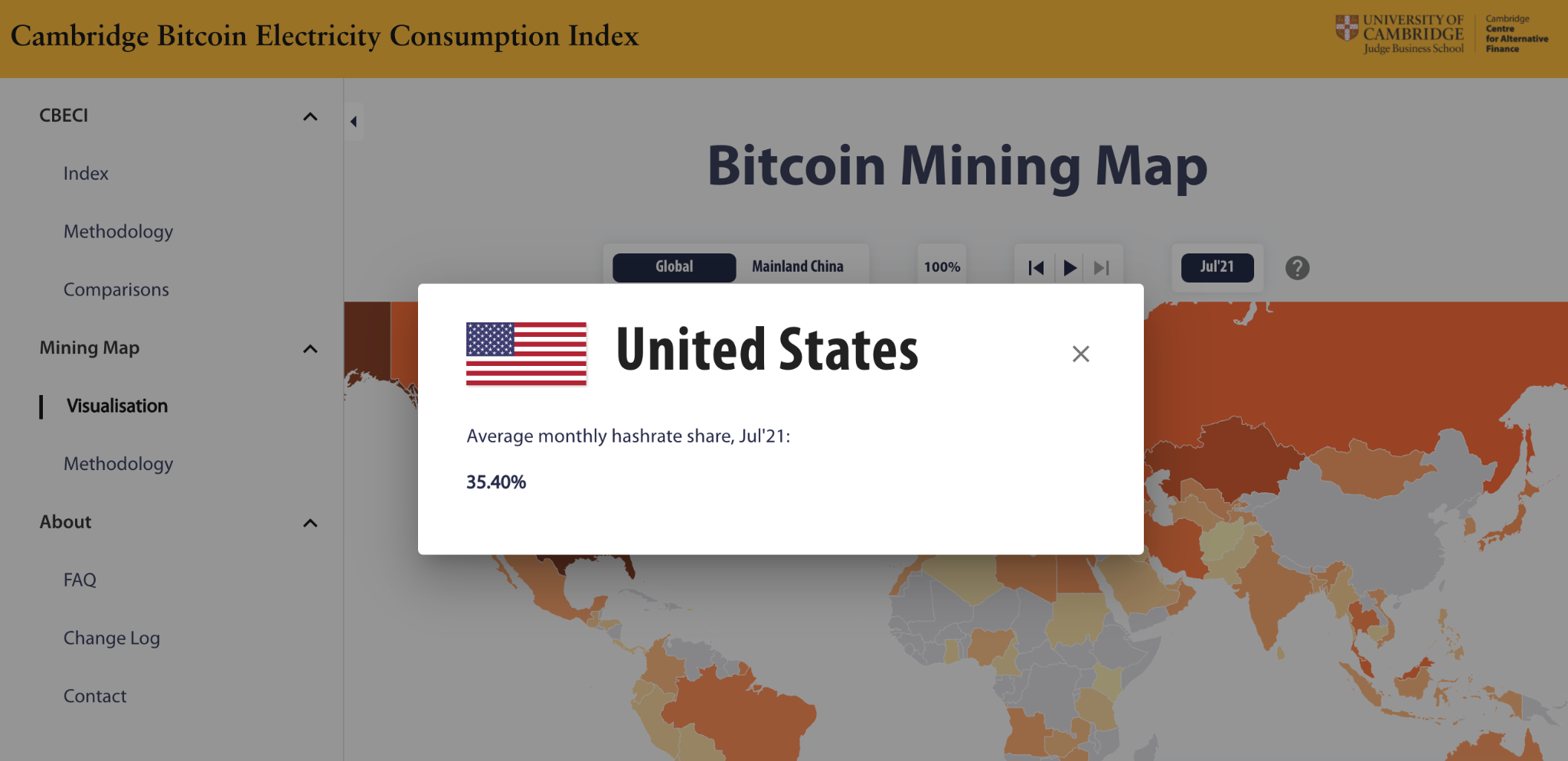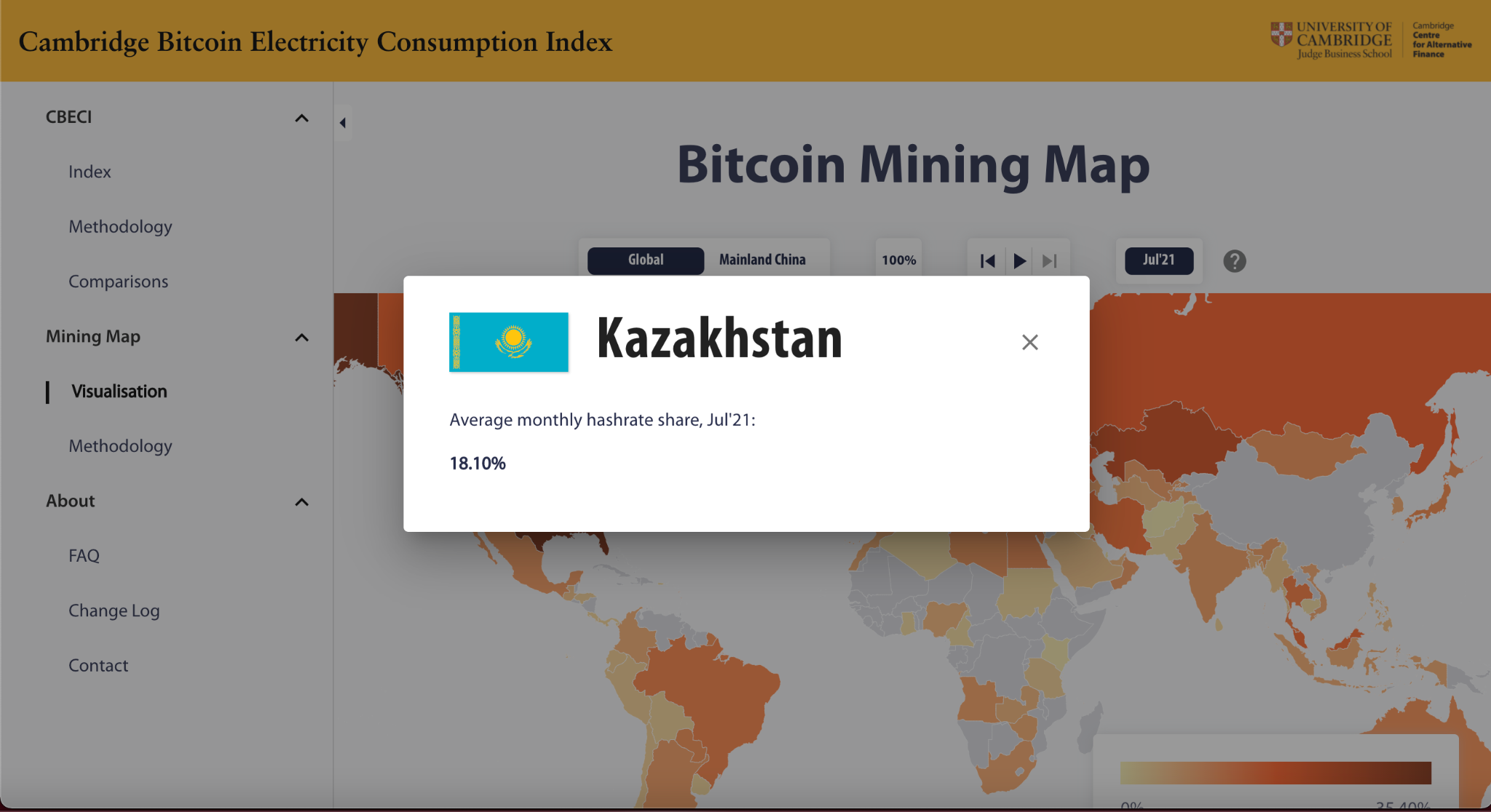|
Getting your Trinity Audio player ready...
|
The United States is now the country with the largest percentage of the total hash rate pointed at the BTC network. For years, mainland China held the number one spot on this list, but China’s recent crackdown on digital currency has caused all digital currency-related businesses and service providers to re-locate.

According to the Cambridge Centre for Alternative Finance’s BTC mining map, beginning in June of 2021, the United States overtook Mainland China as the country with the majority of the hash power supporting the BTC network. But why?
Because in early June, the People’s Bank of China (PBOC) released a series of statements that brought an end to the digital asset industry in the country; the PBOC issued a ban on BTC mining in several provinces and told all banks and payments platforms to stop supporting digital currency transactions. As a result, miners were forced to relocate outside of China.
A surprising move
Many businesses find U.S. an attractive location to have an office due to the country’s political stability. However, it’s surprising to see the United States become the country that a majority of digital currency miners have decided to set up shop in. Even though the U.S. government provides regulatory security, there are fewer locations in the country that have the necessary infrastructure to host mining rigs as well as low electricity costs compared to countries like Kazakhstan and Canada.
Although some service providers in the United States are equipped to handle commercial mining operations, it’s unlikely that the U.S.-based facilities can house all of the mining rigs leaving Mainland China. According to Lars Jorgensen, the Chief Operating Officer of TAAL Distributed Information Technologies Inc. (CSE:TAAL | FWB:9SQ1 | OTC: TAALF), it can take over a year to build a 50- to 100-megawatt site. And for the miners based in China that needed to relocate as soon as possible, it is not economically feasible to keep their mining machines offline for that long.
Rather than going directly to the U.S., it was expected that most miners leaving China would set up shop in an interim location where there are low electricity prices and the infrastructure needed to run a digital currency mining operation business. Many people believed that miners would leave mainland China and relocate to Kazakstan until the mining facilities in the United States could operate at a larger capacity.

The data from Cambridge Centre for Alternative Finance’s BTC mining map supports this idea. Kazakhstan is the country with the second-largest share of hash power pointed at the BTC network with 18.10% of the total hash located in the country. From May to July, the amount of hash power located in Kazakhstan has more than doubled.
What to watch out for
In the next few months, the United States is likely to become the host of even more of the hash power that has left mainland China. There is a strong possibility that miners begin to leave Kazakhstan—the country they relocated to as an interim solution—and set up shop in the United States as more data centers gain the ability to host a larger number of mining machines.
Watch: CoinGeek New York panel, How to Achieve Green Bitcoin: Energy Consumption & Environmental Sustainability

 12-12-2025
12-12-2025 





